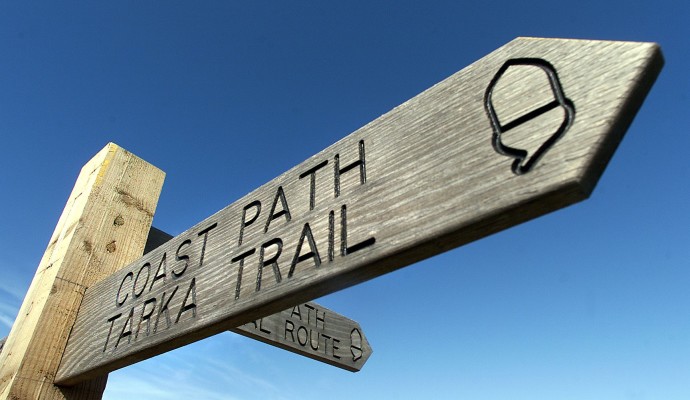Interesting information
The Town Hall was built in 1861 on the site of a previous one, in a Georgian style to go with the rest of the street. It contains the original Shambles yard, once the meat market for the town.
While most of the street is 18th century in age and style, there are some older buildings. Notable is the Black Horse Inn, almost opposite the Town Hall.
Just past the South Street carpark, you’ll have reached a part of the Torrington Commons. They are said to have been established in 1185 by Baron William FitzRobert of Torrington to be used for the benefit of the poor.
Whilst walking on George’s Path, you’ll arrive at an obelisk. This is a memorial to the soldiers who died at the battle of Waterloo. It was erected three years after the battle, in 1818.
Along Rolle Road you’ll come across Taddiport Bridge. The bridge is said to be medieval (13th century), but has also been attributed to the 16th century. Originally it carried the main road to Torrington from the south.
The railway from Bideford to Torrington was completed in 1872, and gave the town a direct link all the way to London. Since then, the line has become transformed into a cycle and walkway, part of the Tarka Trail. It is also suitable for pushchairs and wheelchairs, which can use it for many miles in both directions from Torrington Station.
At the most northerly point of the walk is the village of Weare Giffard. This is a long, picturesque village on the floor of the Torridge Valley.
Once back in the town of Torrington, you’ll notice Dartington Glass. Dartington Glass was established here in 1966 by the Dartington Hall Trust, which was itself established in South Devon to achieve economic and social regeneration of a rural area. The glass works was begun in order to enhance local employment and local crafts and skills
Near the end of the walk, you’ll see Torrington church. The church was blown up in 1646 during the civil war battle of Torrington. It was rebuilt in 1651 and more fully restored in 1864. The spire is quite a landmark locally. This was added to the church in 1828.


